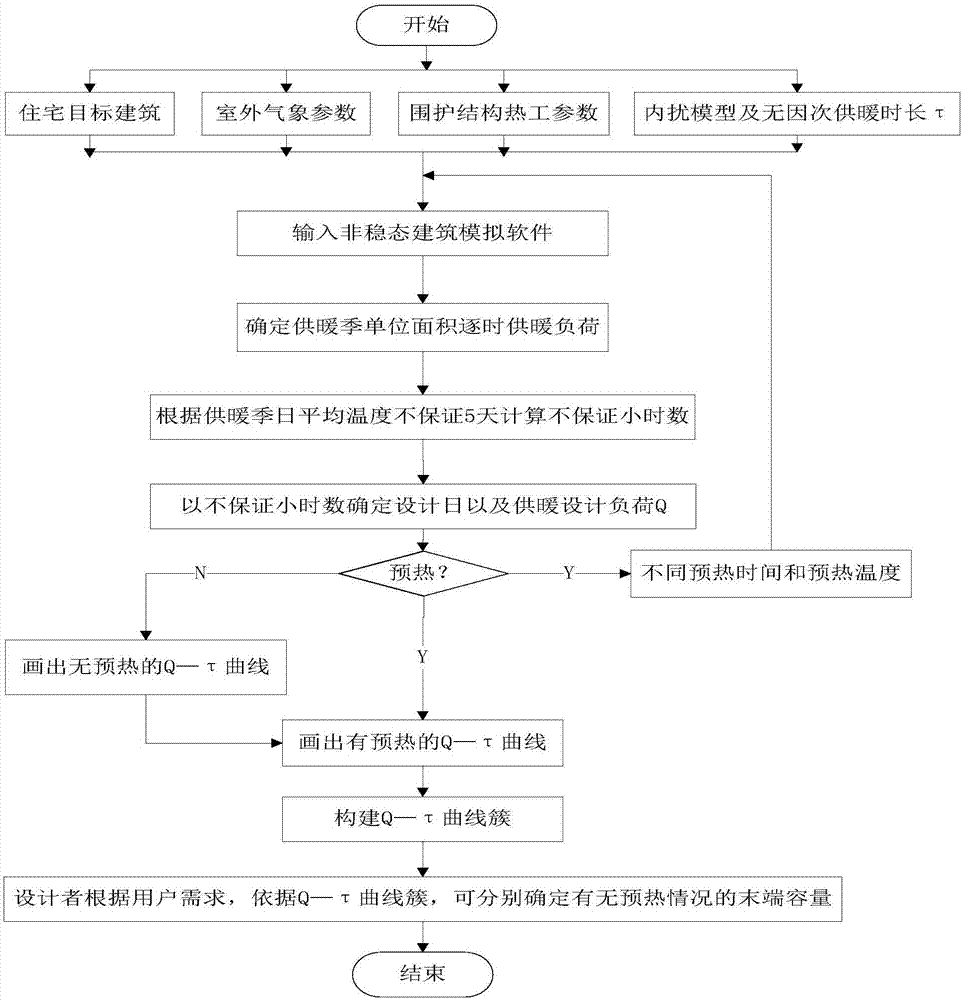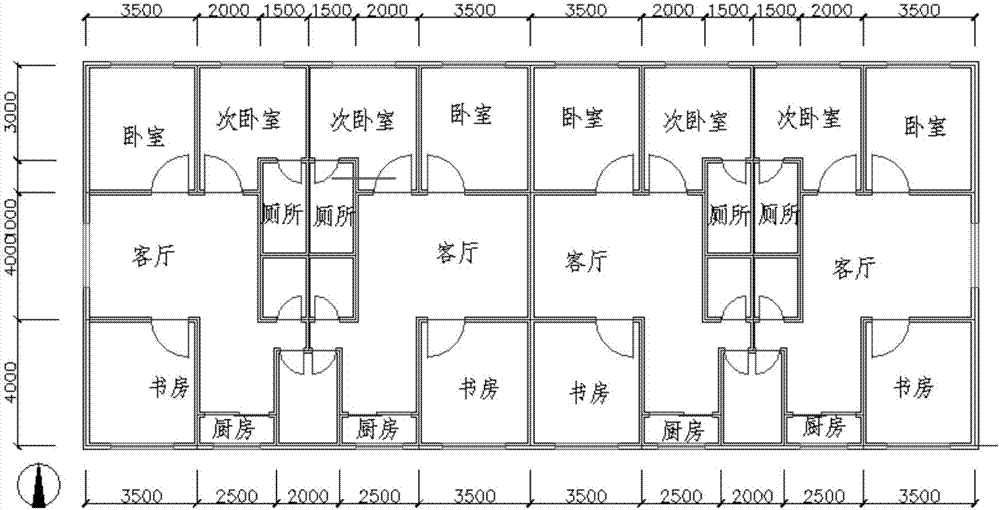House heating terminal capacity determination method based on Q-t curves
A determination method and residential technology, applied in the field of residential building heating, can solve problems such as the inability to calculate the steady state algorithm, the inability to calculate the time dimension of the steady state algorithm, and the deviation of the calculation result of the steady state method.
- Summary
- Abstract
- Description
- Claims
- Application Information
AI Technical Summary
Benefits of technology
Problems solved by technology
Method used
Image
Examples
Embodiment
[0066] The target building of this embodiment is a multi-storey residence located in Changsha in my country's hot summer and cold winter region, with a total of 7 floors, a floor height of 2.7m, and a window-to-wall ratio of 0.4. See building plans figure 2 . The construction area of each floor is 336m 2 , 4 households on each floor, with 3 bedrooms and 1 living room, and one household on the west middle floor is used as the calculation object.
[0067] Residents' activities are concentrated in the living room and bedroom, so only the living room and bedroom are equipped with heating, and the other rooms are not heated. The heating temperature is set at 20°C. The heating season is calculated from November 15th to February 15th, a total of 92 days. Assuming that the doors and windows of the room are tightly closed, the ventilation is based on the number of air changes per hour throughout the day -1 .
[0068] Step 1: Input the residential target building, outdoor meteorolog
PUM
 Login to view more
Login to view more Abstract
Description
Claims
Application Information
 Login to view more
Login to view more - R&D Engineer
- R&D Manager
- IP Professional
- Industry Leading Data Capabilities
- Powerful AI technology
- Patent DNA Extraction
Browse by: Latest US Patents, China's latest patents, Technical Efficacy Thesaurus, Application Domain, Technology Topic.
© 2024 PatSnap. All rights reserved.Legal|Privacy policy|Modern Slavery Act Transparency Statement|Sitemap



